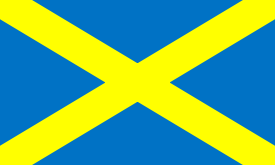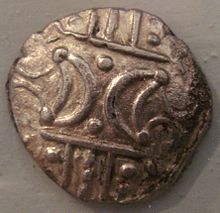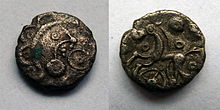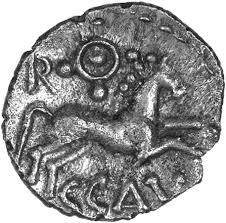It looks like you're using an Ad Blocker.
Please white-list or disable AboveTopSecret.com in your ad-blocking tool.
Thank you.
Some features of ATS will be disabled while you continue to use an ad-blocker.
share:
reply to post by Ramcheck
Have you seen the Duan Albanach (Song of the Scots)?
This is said to have been written around 1060-1090, in the reign of King Mael Coluim (Malcolm), son of King Duncan, of 'MacBeth' fame.
Again, it tells the same story of Brutus as Tysilio did. Thought it was worth a read, as the King's list is comparable to the Pictish Chronicles. There seems to be a lot of corroboration for Alan Wilson's work.
Have you seen the Duan Albanach (Song of the Scots)?
This is said to have been written around 1060-1090, in the reign of King Mael Coluim (Malcolm), son of King Duncan, of 'MacBeth' fame.
Again, it tells the same story of Brutus as Tysilio did. Thought it was worth a read, as the King's list is comparable to the Pictish Chronicles. There seems to be a lot of corroboration for Alan Wilson's work.
beansidhe
reply to post by Ramcheck
Have you seen the Duan Albanach (Song of the Scots)?
This is said to have been written around 1060-1090, in the reign of King Mael Coluim (Malcolm), son of King Duncan, of 'MacBeth' fame.
Again, it tells the same story of Brutus as Tysilio did. Thought it was worth a read, as the King's list is comparable to the Pictish Chronicles. There seems to be a lot of corroboration for Alan Wilson's work.
Well that's my weekend organised, thank you. Haha.
parad0x122
I just posed a question: Why do it in that manner?
To explain like 40 things in about 3-4 sentences, mainly.
And because I don't wanna sound like everyone else.
Ramcheck
PonderingSceptic
reply to post by beansidhe
A Dragon, grass snakes have an important part in mythology and art.
No biggy, just to mention that this term 'myth' is itself a 'myth' by it's own definition, I'm sure you know this yourself though . Legends are only altered or distorted facts. That's pretty much the 'gist' of this thread. Again, just saying, not assuming you read the whole thing or whatever.
Some myths go beyond the definition of myth itself like the one about Troy. Old libraries were burned in the name of religion, as a perceived source of different faith: Alexandria, Nalanda, naming just few major. Some of them most likely had real explanations. Science, historic facts easily become interpreted as pagan lies and myths, heretical ideas and are distorted. History has a tendency to repeat itself in numerous places, different times, and in all seriousness, without exclusion of modern times.
Some myths may have factual background and likely not in a "most likely" or "convenient" way.
reply to post by parad0x122
Nice one parad0x, thanks for being so magnanimous. Since you're here, why not give us a hand with this? All opinions are welcome
Nice one parad0x, thanks for being so magnanimous. Since you're here, why not give us a hand with this? All opinions are welcome
OK, I think I may have gone maybe a wee bit toooooooooo far here, but...
Platypus? or platypus-like creature? dolphin/duck-like beak/bill/nose with mammalian type body, the "swirls" at the feet could indicate water or swimming? no?
Ach well... LOL
Platypus? or platypus-like creature? dolphin/duck-like beak/bill/nose with mammalian type body, the "swirls" at the feet could indicate water or swimming? no?
Ach well... LOL
Here's an earlier Alban, with (as ususal) an unknown background and vague links to Scotland:
Early British Kingdoms
Here is his flag:

A saltire, and interestingly St. Andrew has links to Alban as the Abbey of St Alban (in England) had a chapel of St. Andrew attached.
St. Alban
(Died AD 304)
Saint Alban was a pagan soldier in the Roman Army stationed in Britain. His exact background is unknown, but popular tradition declares him a native Briton. Bede says he lived during the religious persecutions of the Emperor Diocletian (c.AD 304), though modern historians have argued for similar circumstances which arose some years earlier, during the reigns of Decius (c.254) or Septimus Severus (c.209).
Early British Kingdoms
Here is his flag:

A saltire, and interestingly St. Andrew has links to Alban as the Abbey of St Alban (in England) had a chapel of St. Andrew attached.
reply to post by Gordi The Drummer
Aye that's right Gordi, just give us a whole other continent to worry about!
Aye that's right Gordi, just give us a whole other continent to worry about!
beansidhe
Here's an earlier Alban, with (as ususal) an unknown background and vague links to Scotland:
St. Alban
(Died AD 304)
Saint Alban was a pagan soldier in the Roman Army stationed in Britain. His exact background is unknown, but popular tradition declares him a native Briton. Bede says he lived during the religious persecutions of the Emperor Diocletian (c.AD 304), though modern historians have argued for similar circumstances which arose some years earlier, during the reigns of Decius (c.254) or Septimus Severus (c.209).
Early British Kingdoms
Here is his flag:
A saltire, and interestingly St. Andrew has links to Alban as the Abbey of St Alban (in England) had a chapel of St. Andrew attached.
And THAT is who the town of St.Albans north London was named after!
He was beheaded thereabouts on the orders of that Roman Emperor (Diocletian?)!
The site of the town (St.Albans) was 1st major town on the main "Roman" route NORTH, and "was a settlement of pre-Roman origin named Verlamion (or Verulam) by the Ancient British, Catuvellauni tribe!"
reply to post by Gordi The Drummer
But who was St. Andrew anyway?
The legend has it that his remains were to be hidden in the furthest corner of the world, and St Regulus got in a boat and ended up in Fife (sorry, Fifers). You won't just end up in Fife -it's not like your boat would sail you around France and along the raging current of Fife?? Well, I don't think so anyway. These might all be something or nothing, but Thracian connections interest me now. You know, what was going on in Scotland? It was a safe place to hide the stone of destiny, it was a safe place to hide the relics of an apostle, who had taught in Thrace. But it was overrun by fierce barbarians who could slaughter 50,000 Romans without even bothering to mark the occasion? Am I missing something here?
But who was St. Andrew anyway?
Eusebius in his church history 3,1 quotes Origen as saying Andrew preached in Scythia. The Chronicle of Nestor adds that he preached along the Black Sea and the Dnieper river as far as Kiev, and from there he traveled to Novgorod. Hence, he became a patron saint of Ukraine, Romania and Russia. According to tradition, he founded the See of Byzantium (Constantinople) in AD 38, installing Stachys as bishop. According to Hippolytus of Rome, he preached in Thrace, and his presence in Byzantium is also mentioned in the apocryphal Acts of Andrew, written in the 2nd century; Basil of Seleucia also knew of Apostle Andrew's mission in Thrace, as well as Scythia and Achaia.
The legend has it that his remains were to be hidden in the furthest corner of the world, and St Regulus got in a boat and ended up in Fife (sorry, Fifers). You won't just end up in Fife -it's not like your boat would sail you around France and along the raging current of Fife?? Well, I don't think so anyway. These might all be something or nothing, but Thracian connections interest me now. You know, what was going on in Scotland? It was a safe place to hide the stone of destiny, it was a safe place to hide the relics of an apostle, who had taught in Thrace. But it was overrun by fierce barbarians who could slaughter 50,000 Romans without even bothering to mark the occasion? Am I missing something here?
edit on 12-4-2014 by
beansidhe because: sp
beansidhe
But who was St. Andrew anyway?
...The legend has it that his remains were to be hidden in the furthest corner of the world, and St Regulus got in a boat and ended up in Fife (sorry, Fifers). You won't just end up in Fife -it's not like your boat would sail you around France and along the raging current of Fife?? Well, I don't think so anyway. These might all be something or nothing, but Thracian connections interest me now. You know, what was going on in Scotland? It was a safe place to hide the stone of destiny, it was a safe place to hide the relics of an apostle, who had taught in Thrace. But it was overrun by fierce barbarians who could slaughter 50,000 Romans without even bothering to mark the occasion? Am I missing something here?edit on 12-4-2014 by beansidhe because: sp
Ahh, not "missing" something Beans, uncovering something!!
What if... the "fierce barbarian" hordes were precisely the reason WHY it was safe.
What if THEY were the protectors?
If the ancient inhabitants of far-flung Scotland were indeed connected to Thrace, and were continually and successfully re-enforced with comrades from other Celtic/Pictish states the world over, probably via Ireland?
Then what safer place to gather and hide sacred relics?
The northern "barbarian hordes" to the Romans, were actually the sacred guardians of ancient Thracian, Celtic and Pictish culture and relics? Repulsing every attempt to invade and conquer, in order to safeguard their own beliefs and way of life.
It all fits the emerging facts a lot better than the Roman/Traditional taught History version, no?
reply to post by Gordi The Drummer
Yes...it does. The Romans were very keen to invade. Either Pictland embarrassed them as a constant failure in their campaign for absolute rule, or they wanted something from it. We had a lot of metal and natural resources, but we know from archaeological digs that the Romans traded with the locals fairly freely. Hmm.
Maybe the stones aren't just forgotten symbols - maybe they were deliberately encoded??
Yes...it does. The Romans were very keen to invade. Either Pictland embarrassed them as a constant failure in their campaign for absolute rule, or they wanted something from it. We had a lot of metal and natural resources, but we know from archaeological digs that the Romans traded with the locals fairly freely. Hmm.
Maybe the stones aren't just forgotten symbols - maybe they were deliberately encoded??
beansidhe
reply to post by Gordi The Drummer
....Maybe the stones aren't just forgotten symbols - maybe they were deliberately encoded??
Indeed, perhaps the symbol of the Z-Rod (from Gerritania) with Double Joined (Tup-ye) Circles (Righ), usually associated with the "Romanas" serpent, when taken literally, actually means; "Gerrit righ tupye Romanas" In the ancient Pictish/Gaelic/Celtic languages?
reply to post by Gordi The Drummer
I'm reading that thinking - he knows the Z rods are from Gerritania? Where is that, how does he know?
Lol!!
I'm reading that thinking - he knows the Z rods are from Gerritania? Where is that, how does he know?
Lol!!
Last wee bit for tonight: Tertullian, a Christian writer from Carthage wrote between 160-220AD. Well, he lived between then, so let's say he wrote
between 180-220 AD.
He wrote that "the parts of Britain which had been inaccessible to the Romans, were subdued to Christ".
So churches were established in Scotland before the time of Tertullian? No wonder St. Ninian found that the druids practised a similar religion to him!
The Book of the Constitution
So we have St Andrew preaching to Thracian Celts in the first century, and somehow before the end of the second century, Scotland is subdued to Christ? I didn't learn that at school! These Celts were coming over and bringing with them the teaching of Jesus? But presumably Jesus wouldn't make much sense in a vacuum, would you not need to know about 'Christianity' ie Old Testament things in order to know that Jesus was prophesised to appear? Or is this propaganda from Tertullian -although I don't know what the benefit would be to him.
He wrote that "the parts of Britain which had been inaccessible to the Romans, were subdued to Christ".
So churches were established in Scotland before the time of Tertullian? No wonder St. Ninian found that the druids practised a similar religion to him!
The Book of the Constitution
So we have St Andrew preaching to Thracian Celts in the first century, and somehow before the end of the second century, Scotland is subdued to Christ? I didn't learn that at school! These Celts were coming over and bringing with them the teaching of Jesus? But presumably Jesus wouldn't make much sense in a vacuum, would you not need to know about 'Christianity' ie Old Testament things in order to know that Jesus was prophesised to appear? Or is this propaganda from Tertullian -although I don't know what the benefit would be to him.
Ramcheck
Dis Wik, I am completely blown off course, I am researching the Scotussaej / Scotussa. The Scotussaej Celtic tribe were recorded as being obliterated by Alexander in Macedonia. I'm not convinced. This is 'Scythian' territory at the best of times. It's actually ridiculous I even have to be looking for a proper etymology of the name of my country, ridiculous. But there ya go, this is the world we live in. We have one or two recorded speculations as to it's origins obviously, none impress me.
Some chronicles tell about marriage involved before it. Meda of Odessos.
reply to post by PonderingSceptic
Princess Meda, from what little I can find about her, was the daughter of the Thracian King Cothelas. She married Philip II of Macedon, who had previously been married to Olympia, herself a princess of Epirus (an area around Greece/Albania) and mother of Alexander the Great.
The marriage , presumably, cemented relationships between Thrace and Macedonia? Meda herself would have become Alexander the Great's step-mother?
Princess Meda, from what little I can find about her, was the daughter of the Thracian King Cothelas. She married Philip II of Macedon, who had previously been married to Olympia, herself a princess of Epirus (an area around Greece/Albania) and mother of Alexander the Great.
The marriage , presumably, cemented relationships between Thrace and Macedonia? Meda herself would have become Alexander the Great's step-mother?
beansidhe
reply to post by Gordi The Drummer
Yes...it does. The Romans were very keen to invade. Either Pictland embarrassed them as a constant failure in their campaign for absolute rule, or they wanted something from it. We had a lot of metal and natural resources, but we know from archaeological digs that the Romans traded with the locals fairly freely. Hmm.
Maybe the stones aren't just forgotten symbols - maybe they were deliberately encoded??
Probably hubris on the part of the Romans. The Severus invasions were part three of the Romans efforts to bring Pictland in line. And yes as you said in another post something other than what history presents needs to be considered here. According to the reports Rome lost 10 Legions during that campaign. That is unheard of. Sounds like the Picts and friends had found as serious and effective way of reducing Roman military superiority that doesn't lend itself to the simple harassment warfare idea. This kind of defeat requires meeting the Romans in the field with numbers and tactics worthy of the Romans themselves. We shouldn't even use the term "quagmire" here to describe what happened to Severus in Scotland. They were soundly defeated and routed. It is very possible that Severus was poisoned to stop the madness. Of his two remaining sons one killed the other and then sued for peace with the Picts. What does that tell us?
reply to post by beansidhe
A while back I thought out loud that it was odd the Romans said they were receiving more tribute from Britain than before they invaded. I asked how a some backward agrarian rustics could even pay tribute. Come to find out, several of the tribes in Britain were already minting their own coin in late BC. The Catuvellauni, Silures (Welsh) and the Iceni to name some.
Check out this Iceni coin.

Here is a Catuvellauni (East Coast) coin from king Cunobelius the father of Caracacus. These look to be Thracian. Most notably the wheat head, harp, horse, ect use. Also unless I am wrong they represent the use of written language and some degree of education then before Rome.

Dobunni, north Wales.

Silurian (Wales)

There are others.
A while back I thought out loud that it was odd the Romans said they were receiving more tribute from Britain than before they invaded. I asked how a some backward agrarian rustics could even pay tribute. Come to find out, several of the tribes in Britain were already minting their own coin in late BC. The Catuvellauni, Silures (Welsh) and the Iceni to name some.
Check out this Iceni coin.

Here is a Catuvellauni (East Coast) coin from king Cunobelius the father of Caracacus. These look to be Thracian. Most notably the wheat head, harp, horse, ect use. Also unless I am wrong they represent the use of written language and some degree of education then before Rome.

Dobunni, north Wales.

Silurian (Wales)

There are others.
new topics
-
Tariffs all around, Except for ...
Predictions & Prophecies: 23 minutes ago -
Gen Flynn's Sister and her cohort blow the whistle on DHS/CBP involvement in child trafficking.
Whistle Blowers and Leaked Documents: 5 hours ago -
Anybody else using Pomodoro time management technique?
General Chit Chat: 7 hours ago -
Bucks County commissioners vote to count illegal ballots in Pennsylvania recount
2024 Elections: 9 hours ago -
Trump sues media outlets -- 10 Billion Dollar lawsuit
US Political Madness: 10 hours ago -
Fired fema employee speaks.
US Political Madness: 11 hours ago
top topics
-
Trump sues media outlets -- 10 Billion Dollar lawsuit
US Political Madness: 10 hours ago, 24 flags -
Bucks County commissioners vote to count illegal ballots in Pennsylvania recount
2024 Elections: 9 hours ago, 21 flags -
How long till it starts
US Political Madness: 12 hours ago, 17 flags -
USSS Agent Fired for Having Sex In Michelle Obama's Bathroom
Politicians & People: 14 hours ago, 10 flags -
Watching TV
Jokes, Puns, & Pranks: 16 hours ago, 9 flags -
Fired fema employee speaks.
US Political Madness: 11 hours ago, 9 flags -
Gen Flynn's Sister and her cohort blow the whistle on DHS/CBP involvement in child trafficking.
Whistle Blowers and Leaked Documents: 5 hours ago, 7 flags -
Anybody else using Pomodoro time management technique?
General Chit Chat: 7 hours ago, 3 flags -
Tariffs all around, Except for ...
Predictions & Prophecies: 23 minutes ago, 0 flags
active topics
-
Mike Tyson returns 11-15-24
World Sports • 48 • : ByeByeAmericanPie -
Bucks County commissioners vote to count illegal ballots in Pennsylvania recount
2024 Elections • 19 • : theatreboy -
Tariffs all around, Except for ...
Predictions & Prophecies • 0 • : FullHeathen -
How long till it starts
US Political Madness • 17 • : WeMustCare -
USSS Agent Fired for Having Sex In Michelle Obama's Bathroom
Politicians & People • 24 • : rickymouse -
The Acronym Game .. Pt.4
General Chit Chat • 962 • : FullHeathen -
TRUMP Could Be Our Modern Day MOSES - The Similarities are Striking.
ATS Skunk Works • 246 • : WeMustCare -
Anybody else using Pomodoro time management technique?
General Chit Chat • 7 • : tamusan -
The Trump effect 6 days after 2024 election
2024 Elections • 141 • : cherokeetroy -
Thanksgiving 2024
Member Art • 19 • : rickymouse
